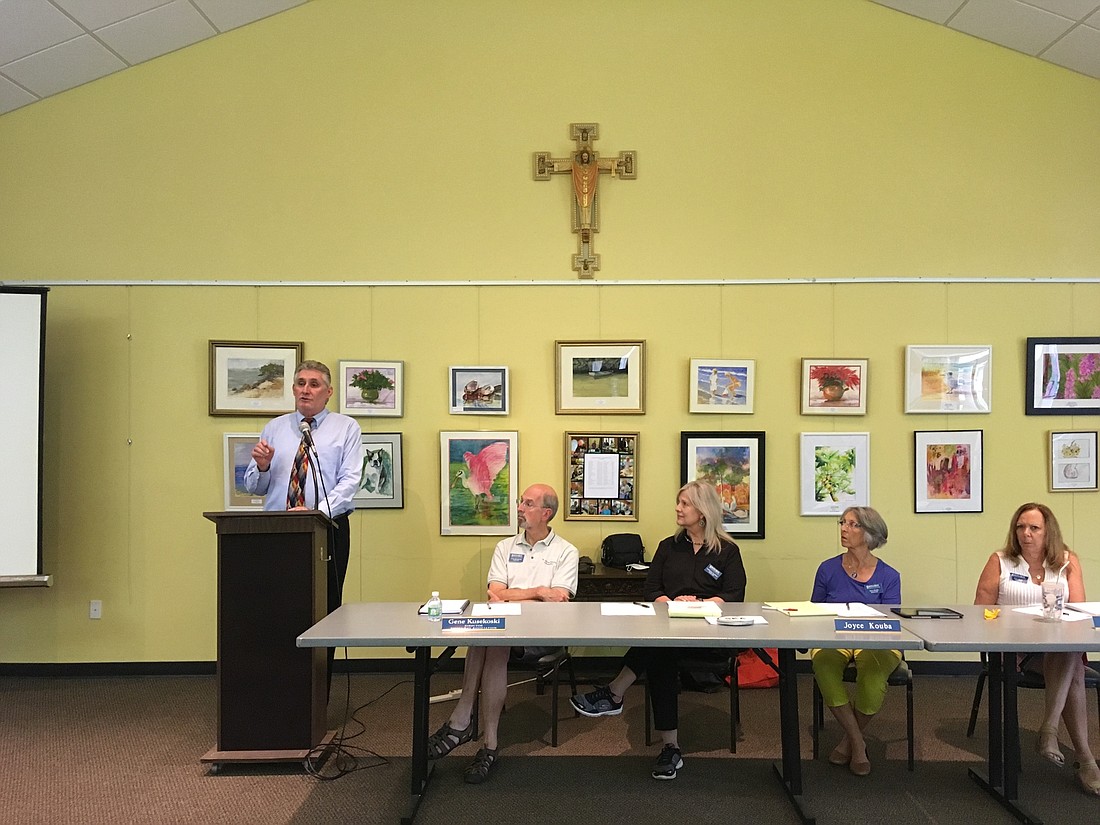- November 24, 2024
-
-
Loading

Loading

In the wake of a long-spanning outbreak of red tide, nitrogen has become a dirty word for some Sarasota residents.
Although red tide is a naturally occurring phenomenon, the algae blooms can feast on pollutants that are present in the water because of human activity. That’s why, at the Oct. 1 City Commission meeting, more than a dozen members of the group Hands Along the Water asked officials to implement a year-round ban on the use of fertilizer with nitrogen and phosphorous.
Hands Along the Water formed earlier this year as a community campaign to mitigate human effects on red tide. Sarasota County already has a ban on the use of fertilizer with nitrogen and phosphorus during the rainy season — June 1 through Sept. 30 — but the resident activists believe recent red tide conditions demand further action.
“If we don’t all do something about this, there will be no reason for anybody to be here,” said Dodie Longfellow, a member of Hands Along the Water. “Our water is our life.”
At an Oct. 4 Siesta Key Association meeting, former County Commissioner Jon Thaxton expressed a similar sentiment as residents asked the best way to fight red tide. He said there were two options for reducing the effects of human pollution: eliminating the pollutants from the water or stopping the pollutants from entering the water in the first place. The latter is much more cost effective, he said.
“The goal should be reducing the amount of nitrogen we’re putting in to the waterways,” Thaxton said. “The result is almost certain to be fewer red tides of lesser intensity covering a smaller area over a shorter period of time.”
Representatives for Hands Along the Water acknowledged state regulations prohibit individual cities or counties from implementing a total fertilizer ban. But the group’s request reflects a desire for action on the issue of red tide, considering the ecological and economic effects of the bloom.
“We need to have a sea change, no pun intended, on the way we do a cost-benefit analysis of regulations,” Thaxton said. “We need to not consider industries in isolation, but the community as a whole.”
The city and the county have regulations in place already designed to minimize nitrogen runoff, such as the seasonal fertilizer ban and a fertilizer-free zone around bodies of water. Both local governments have environmental policies encouraging and promoting sustainable landscaping, including the use of Florida-friendly plants that do not require fertilizer.
The County Commission has requested a future discussion about red tide, the date of which is still to be determined.
In the city, commissioners have not directed staff to pursue any policy changes focused on red tide. Sustainability Manager Stevie Freeman-Montes said staff is focusing on educational efforts to reduce the human amplification of red tide’s effects. Both individuals and larger organizations should take the times to review their landscaping plans and determine if they’re complying with environmental best practices, she said.
“We all have our footprint, you know?” Freeman-Montes said.
She recommended anyone interested in learning more about sustainability to look into the resources offered at Sarasota’s University of Florida Institute of Food and Agricultural Sciences Extension.
Thaxton, meanwhile, encouraged residents to press officials for meaningful change on red tide policies. While decision-makers may currently be focused on the topic, as time passes, he thinks they’re likely to pay less attention to strategies for minimizing nitrogen runoff. At the Siesta Key Association meeting, he told those in attendance not to let the emphasis on the issue fade away.
“Remember this pain,” Thaxton said.